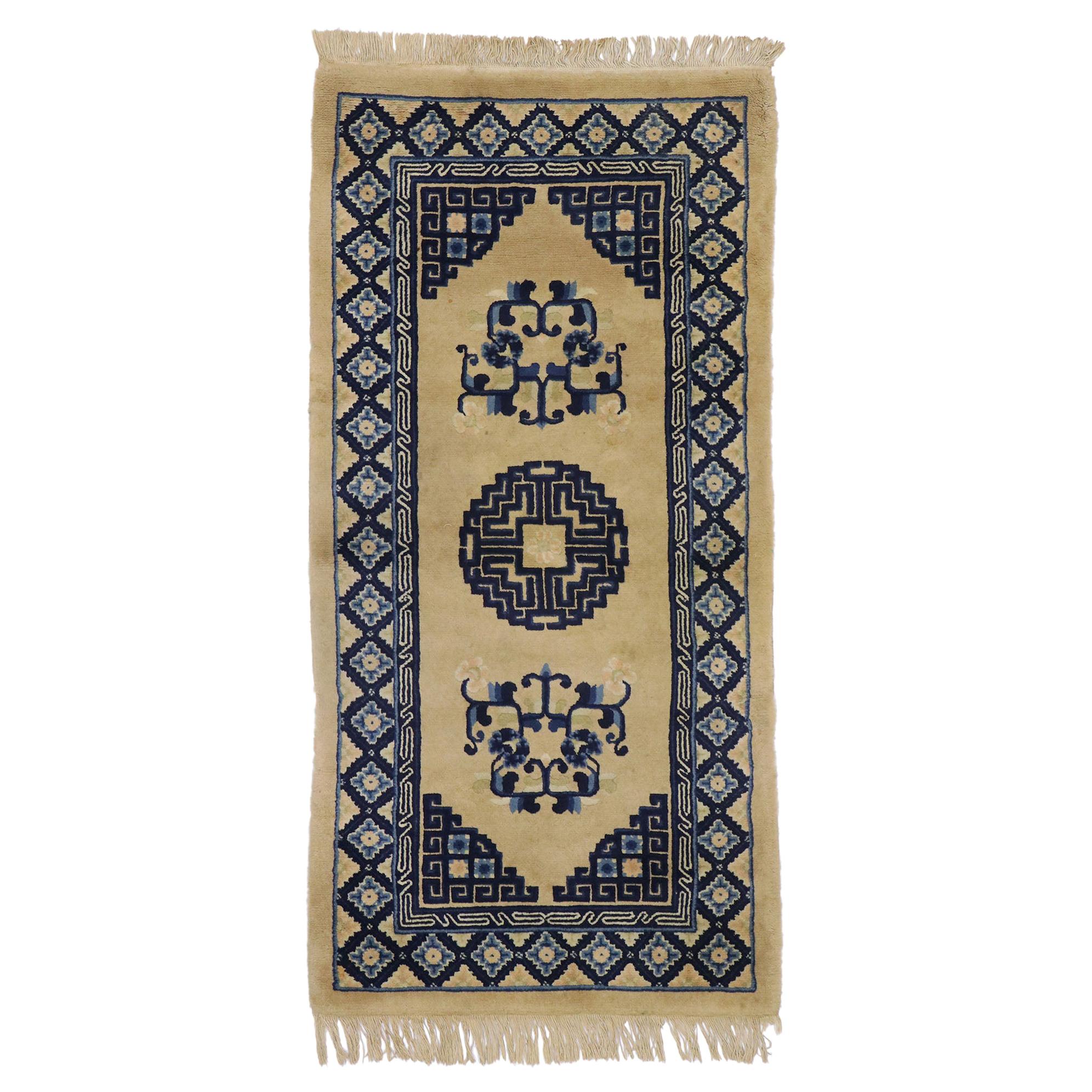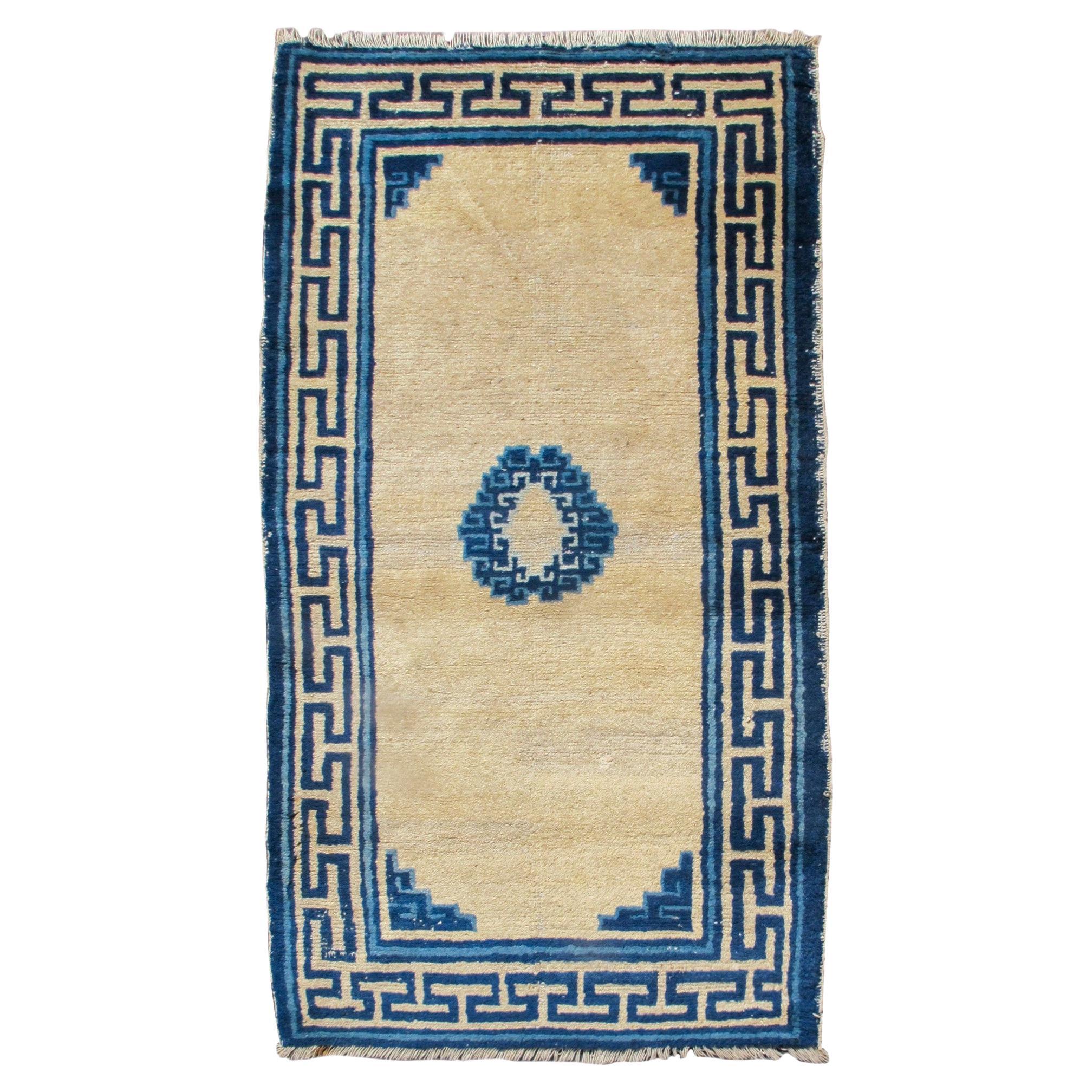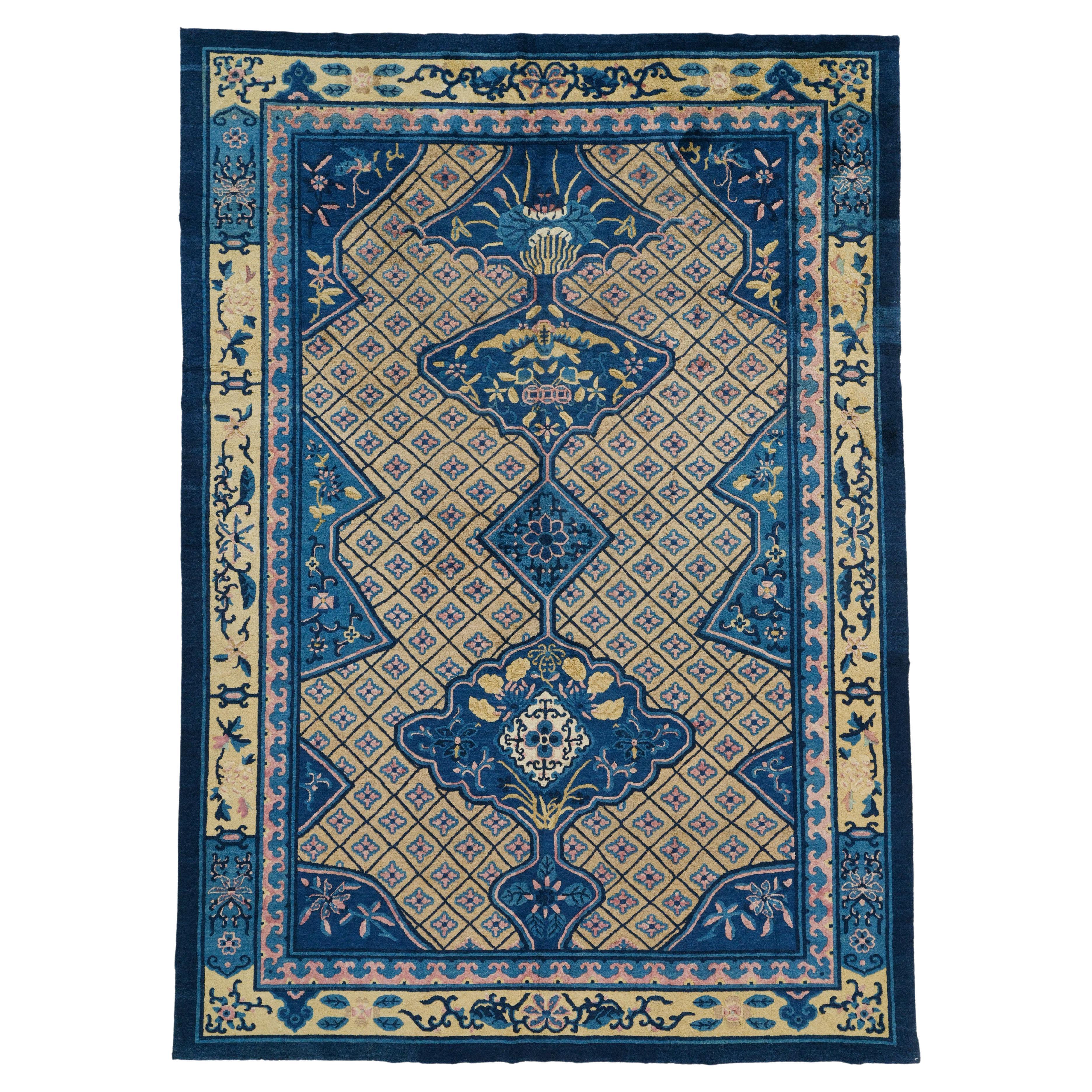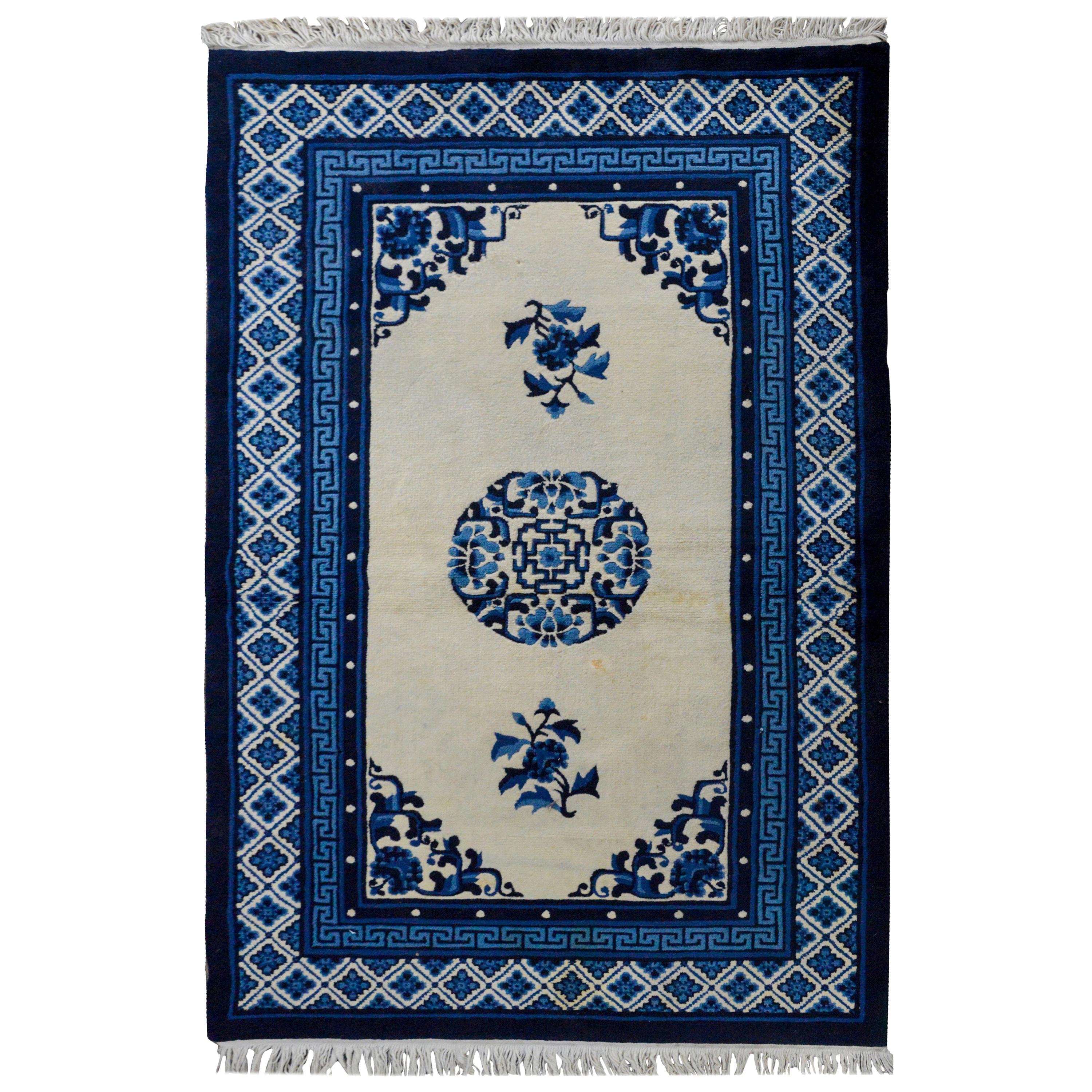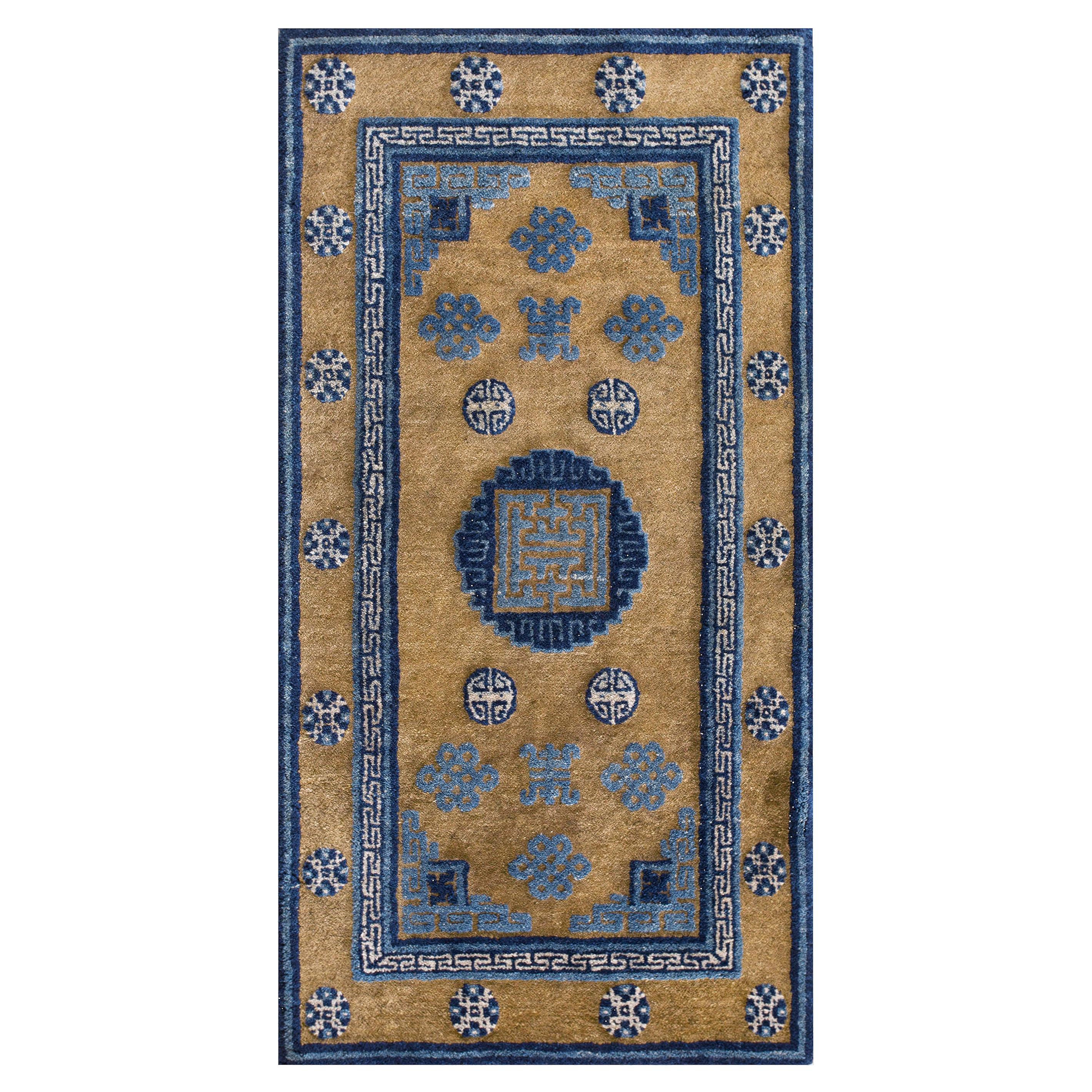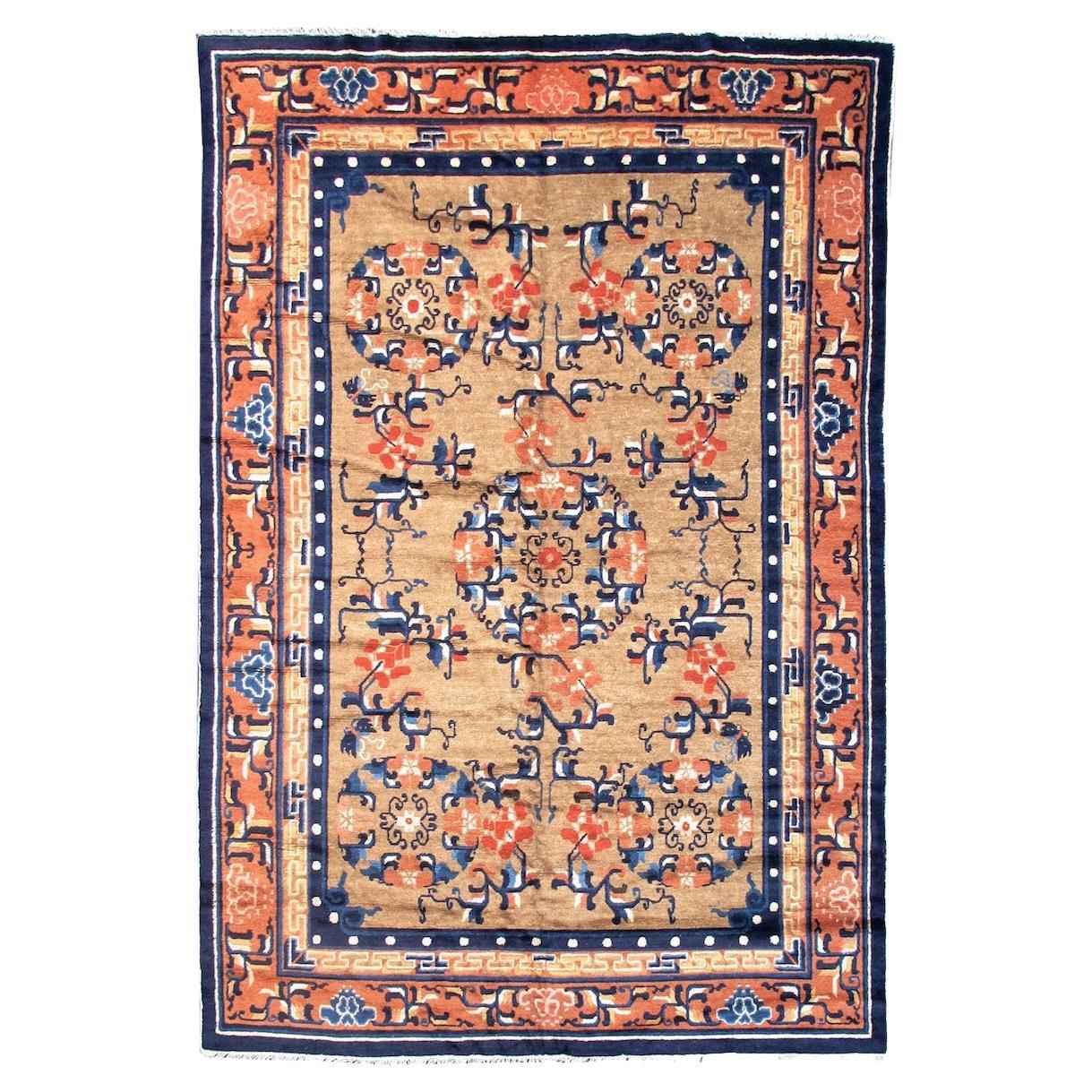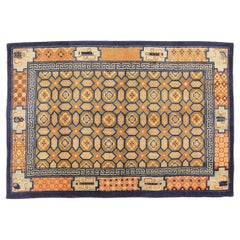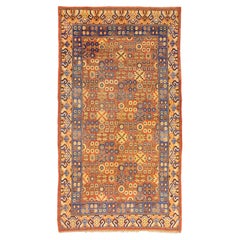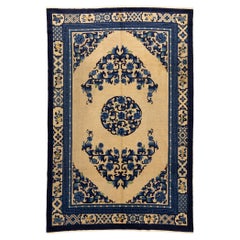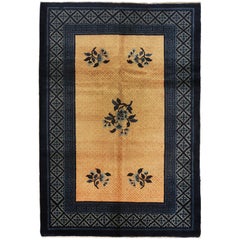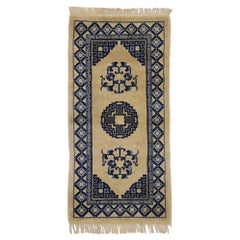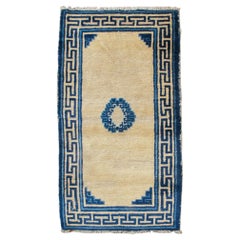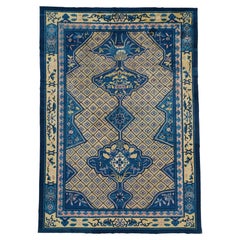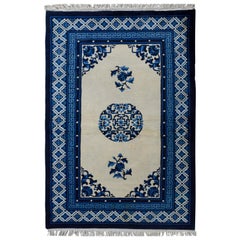Items Similar to Chinese Ningxia Rug 1880-1900
Want more images or videos?
Request additional images or videos from the seller
1 of 10
Chinese Ningxia Rug 1880-1900
$2,142.87
£1,592.73
€1,800
CA$2,958.71
A$3,280.99
CHF 1,723.92
MX$40,088.13
NOK 21,568.56
SEK 20,245.78
DKK 13,706.10
About the Item
It is a small Ningxia carpet from the homonymous area in northern China, handmade between 1880 and 1900, measuring 133 × 71 cm (4' 4" × 2' 3") and it is knotted in wool on warp and weft of cotton. The art of knotting was well known in China in very ancient times. However, it was only at the beginning of the 18th century that rugs began to be considered by the Chinese nobility as an element of social distinction and wealth. Thus, the manufactures developed in the Ningxia region which for centuries was the traditional Chinese knotting area. The field decorated with a rhomboidal grid is enclosed in a simple frame that alternates motifs of high symbolic value drawn with calligraphic grace. The few and soft colors make it perfect for any classic or modern combination.
About the Seller
5.0
Vetted Professional Seller
Every seller passes strict standards for authenticity and reliability
Established in 1986
1stDibs seller since 2021
67 sales on 1stDibs
Typical response time: 1 to 2 days
- ShippingRetrieving quote...Shipping from: Ferrara, Italy
- Return Policy
Authenticity Guarantee
In the unlikely event there’s an issue with an item’s authenticity, contact us within 1 year for a full refund. DetailsMoney-Back Guarantee
If your item is not as described, is damaged in transit, or does not arrive, contact us within 7 days for a full refund. Details24-Hour Cancellation
You have a 24-hour grace period in which to reconsider your purchase, with no questions asked.Vetted Professional Sellers
Our world-class sellers must adhere to strict standards for service and quality, maintaining the integrity of our listings.Price-Match Guarantee
If you find that a seller listed the same item for a lower price elsewhere, we’ll match it.Trusted Global Delivery
Our best-in-class carrier network provides specialized shipping options worldwide, including custom delivery.More From This Seller
View AllChinese Pao Tao Rug
Located in Ferrara, IT
Antique Chinese Pao Tao Rug – 238 × 162 cm
This exquisite Chinese Pao Tao rug is a striking example of traditional craftsmanship from the early 20th century, ...
Category
Early 20th Century Chinese Chinese and East Asian Rugs
Materials
Wool
$3,452
Antique Khotan Rug, 1800-1820
Located in Ferrara, IT
This antique Khotan rug is a beautiful piece that would add an air of elegance to any room. The colors are bold and eye-catching, and the rug is made from high-quality materials. It ...
Category
Antique Early 19th Century East Turkestani Other Chinese and East Asian ...
Materials
Wool
Chinese Rug Peking Ivory Background
Located in Ferrara, IT
Antique Chinese Peking Rug, 1920 ca. A Chinese carpet with a classic layout with medallion and four corners on an ivory background. The details and nuances are very well defined. The...
Category
Vintage 1920s Chinese Chinese and East Asian Rugs
Materials
Wool
Antique Peking Chinese Ivory Field Wool Rug, 1900-1920
Located in Ferrara, IT
This is an antique Peking rug woven in eastern China during the first quarter of the 20th century circa 1900 - 1920s and measures 198 X 136 CM. The field is designed with five blosso...
Category
Early 20th Century Chinese Other Chinese and East Asian Rugs
Materials
Wool
Chinese Rug Silk & Metal
Located in Ferrara, IT
Chinese Rug Silk & Metal – 215 × 120 cm
A luminous example of traditional Chinese weaving, this elegant rug masterfully combines silk and metallic threads to produce a shimmering sur...
Category
Early 20th Century Chinese Chinese and East Asian Rugs
Materials
Wool
$5,833
Antique Traditional Chinese Motifs Small Peking Rug, 19th Century
Located in Ferrara, IT
This is a pecking rug woven in China during the 19th century and measures 177 x 90 CM in size. Its field is created with an intricate geometric design and has traditional Chinese motifs scattered throughout the field which are enclosed in circles. its border is made up of different traditional Chinese motifs such as flowers pottery...
Category
Antique 19th Century Chinese Other More Asian Art, Objects and Furniture
Materials
Cotton
$2,761 Sale Price
20% Off
You May Also Like
Antique Chinese Baotou Rug with Art Deco Style
Located in Dallas, TX
77588 antique Chinese Baotou rug with Art Deco style. This hand-knotted wool antique Chinese Baotou rug features a rounded fretwork medallio...
Category
Early 20th Century Chinese Chinoiserie Chinese and East Asian Rugs
Materials
Wool
Antique Chinese Ningxia Rug, 19th Century
Located in San Francisco, CA
Antique Chinese Ningxia Rug, 19th Century
Antique Chinese Ningxia rugs are rare and collectible. They are hand-woven and feature nature-inspired motifs such as flowers, birds, drago...
Category
Antique 19th Century Chinese Chinese and East Asian Rugs
Materials
Wool
Antique Chinese Rug - Late 19th Century Antique Chinese Rug, Antique Chinese Rug
Located in Sultanahmet, 34
Late 19th century antique Chinese rug, It's in perfect condition and no repair,
A long, long time ago, the first rugs for the imperial court were made in China. That was about 2,000 years ago. The antique rugs are determined by patterns of porcelain painting or silk weaving...
Category
Antique Late 19th Century Chinese Chinese and East Asian Rugs
Materials
Wool
Early 20th Century Peking Rug
Located in Chicago, IL
A charming early 20th century Chinese Peking rug with a central peony medallion amidst a field of more peonies and surrounded by a wide complex border containing geometric and floral...
Category
Vintage 1940s Chinese Chinese Export Chinese and East Asian Rugs
Materials
Wool
Early 20th Century Chinese Baotou Rug ( 2'2" x 4'2" - 66 x 127 )
Located in New York, NY
Early 20th Century Chinese Baotou Rug ( 2'2" x 4'2" - 66 x 127 )
Category
Vintage 1920s Chinese Chinese and East Asian Rugs
Materials
Wool
Antique Chinese Ningxia Carpet Rug, Late 19th Century
Located in San Francisco, CA
Antique Chinese Ningxia Carpet Rug, Late 19th Century
This elegant Chinese Ningxia carpet draws a central roundel composed of lotuses flanked by slightly smaller roundels of the sam...
Category
Antique Late 19th Century Chinese Chinese and East Asian Rugs
Materials
Wool
More Ways To Browse
Warp And Weft
Veneer Dining Tables
Canadian Antique Furniture
Vintage 1940s Dining Room Set
Vintage Danish 70s
French Oak Chair
Tapestry Wall Hanging
Used Settees
Vintage Cane Furniture
Wabi Sabi Wood
Wooden Armrest
Gilt Baroque
Mosaic Italy
System 20
Table Tapered Legs Brass
1940 S Vintage Chairs
Billiards
Cozy Sofa
